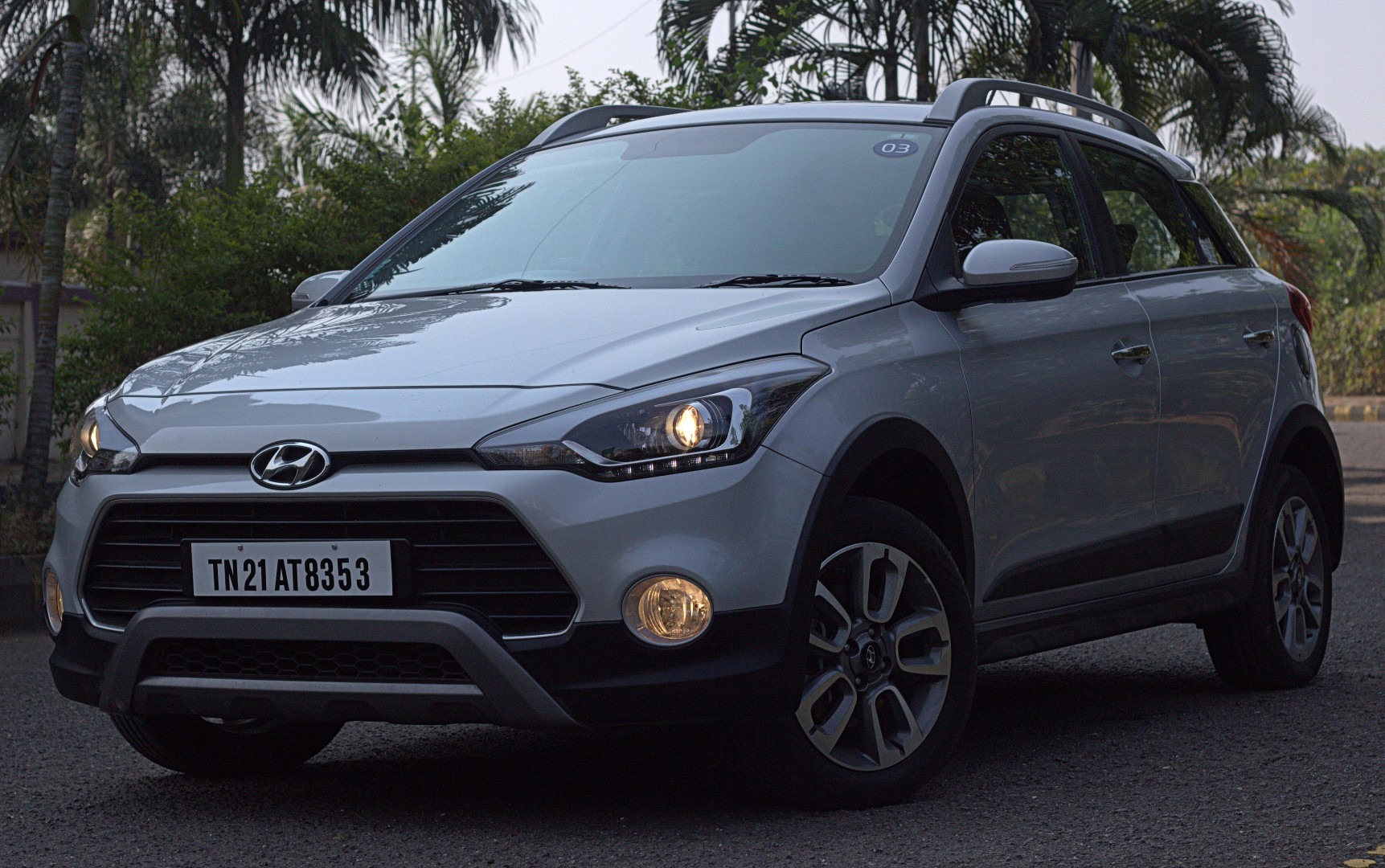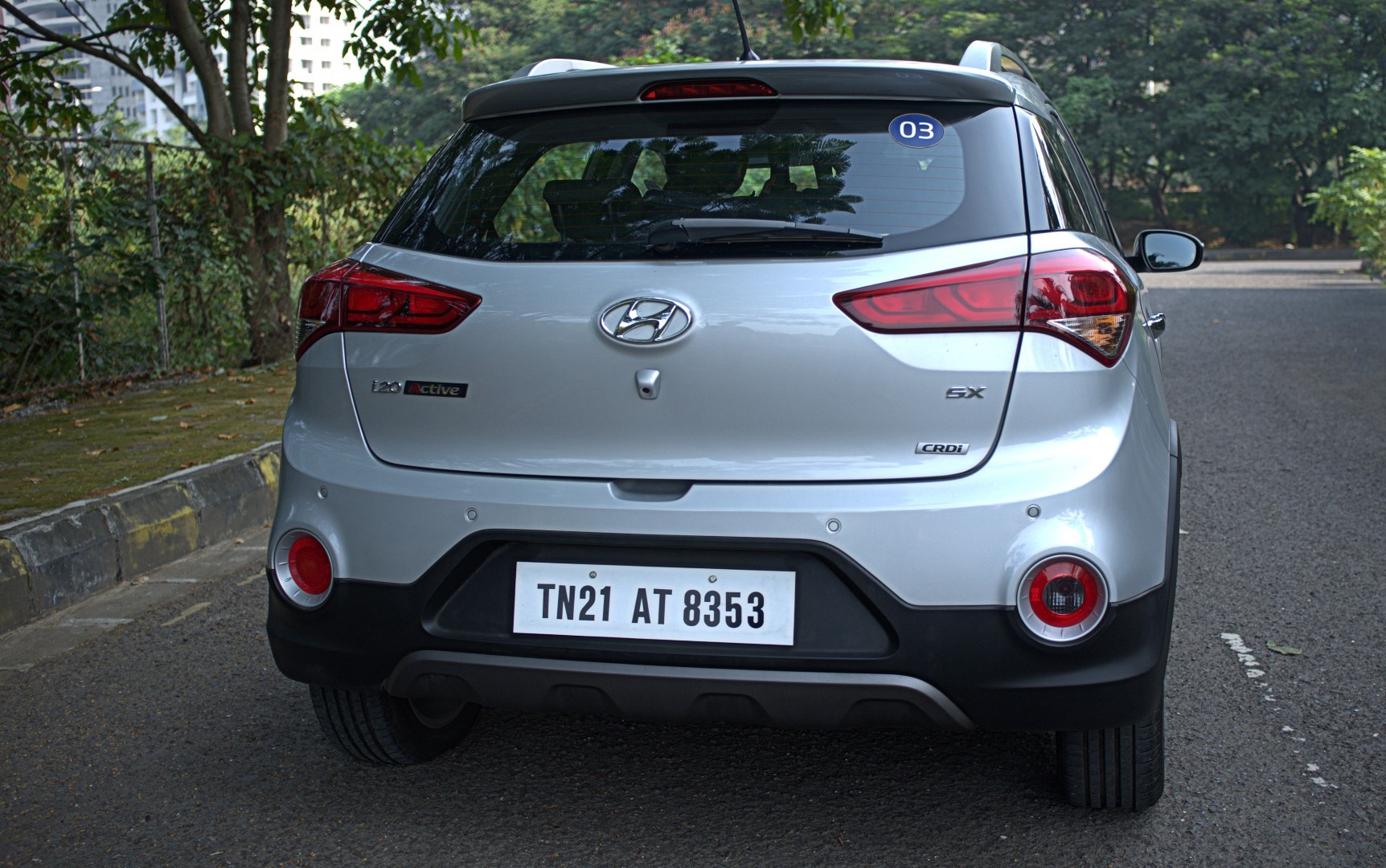The crossover-hatch segment may be a fairly recent development in India but it has quickly become ‘the’ segment to watch out for. Chunky styling, increased road presence and higher ground clearance are but some of the hallmarks of the cars that comprise this segment. India’s number two car manufacturer, Hyundai has been known for premium offerings that come loaded to the gills with features, making for a strong all-round package that has enough going for everyone. Throwing its hat into the crossover-hatch ring, the manufacturer has brought us the i20 Active. We had the good-fortune to test drive it for a few days and here’s what we thought of the car:
The i20 in ‘Elite’ garb has been our pick among Hyundai’s best iteration of their Fluidic design. Mature, Euro-inspired lines with none of the so-called extra flourish that dogs its cousins – the Verna and the Xcent. The crossover edition, christened the i20 Active continues the good work, with sharp edges aplenty and an overall appearance that’s nice and aggressive. The entire car is swathed in thick plastic cladding and the black colour contrasted nicely with the silver body colour. It now sits just five millimetres under the crucial four-metre length cut-off and is about 1760 millimetres wide. Ground clearance is up by 20millimetres over its ‘Elite’ sibling at 190millimetres, making the i20 Active ready to take on the rough and tumble of our urban roads.
The bumper up front is a redesign, with an inverted air-dam and a faux bull-bar cum skid-plate that was finished in brushed silver. Projector headlamps, LED DRL’s and cornering lamps (more on these later) all make for a richly appointed front end. The thick, black plastic cladding can be seen over the wheel-arches as well. Diamond cut alloys on all-four wheels make up the oomph quotient and some’d say that their design brings the Avventura’s wheels to mind. Hyundai has carried forward the tried and tested combination of sixteen inch tires in 195/55 garb from the ‘Elite’ i20. There’s a motorcycle-style fuel-cap which may have ended up looking cheesy, but looks surprisingly good on the car. At the back, the i20 Active sports a new, redesigned bumper as well, with oversized reflectors and a single reverse lamp incorporated into the one on the right. The number-plate slot has been repositioned and the faux skid-plate makes an appearance here as well. The wraparound tail-lamps are a three-cluster arrangement and look stunning despite bucking the LED trend that’s all-too popular these days. The four parking sensors can be seen just above them while the reverse camera is tucked away neatly on the hatch-lid.
On the inside, the lack of beige is refreshing, though the bright trim that our car came with (what Hyundai refers to as ‘Aqua-Blue’) for the interiors might just be a little too loud for some people’s tastes. Well, at-least it is better than the orange interior option, I’d say. The all-too familiar Hyundai steering is chunky to hold and gives a very premium feel. The door-pads too get the blues treatment and by now, the injection of colour was starting to grow on me as well. The door-controls on the driver side sport four-way rocker controls for the mirrors along with the auto-fold button and the power window controls. The seats offer good bolstering and support large Indian frames with ease.
In terms of features, the cabin on the i20 Active feels well-appointed with plenty of thoughtful touches all around. There’s a nifty storage bin under the arm-rest, dual cup-holders near the gear-lever and a small cubbyhole where it flows into meet the base of the centre console. The trapezoidal air-vents with their chrome accents with the hazard lights & central locking button arranged in a stacked layout. Hyundai have thoughtfully provided an USB outlet above the cubbyhole with dual 12 Volt outlets sandwiching it.
The Bluetooth enabled entertainment system also included 1 GB of internal storage space, while the eight-speakers ensure that your favourite tunes come through loud and clear to your ears. The central cabin lights house a drop-down holder for sunglasses and has a felt lining inside to prevent scratches. Unfortunately, Hyundai seem to have missed out on the same in the glove box which has a glossy interior that sees objects sliding above whilst driving. At the back, the i20 Active gets dedicated air-con vents, so passengers keep their cool in the sweltering heat. This however means that the passenger in the middle gets the short end of the stick and ends up being cramped for space. The 285 litre boot is adequate in terms of storage and can easily accommodate the weekend bags for four. Our car came with a dedicated boot-light which meant that we weren’t fishing around for luggage in the dark. If need be, the 60:40 split seat function can be utilized to accommodate excess baggage.
The build quality is a few notches above the Japs and in typical Hyundai fashion, the i20 Active feels the most European among the recent launches. The doors are a good example of this and they close with a satisfying ‘thunk’. Hyundai has walked the middle-line here and you won’t quite build your muscles opening and shutting doors, even as you pride yourself in picking up a car that doesn’t feel like it is an exercise in feather-weight origami. Shut lines stay tight and even all around and you end up feeling a great deal of confidence in the build quality of the car. In terms of safety, the i20 Active comes with ABS and dual-airbags at the front. Hyundai does appear to have taken a few steps backward with this present generation i20 range. For example, the rear disk brakes have been replaced by drums, there’s no sun-roof in this generation and most of all, Hyundai have omitted the curtain as well as side air-bags.
Under the hood, our i20 Active came with the familiar 1.4 litre (1396cc actually) CRDI motor that churns out a healthy 89 Bhp and 220Nm of torque that comes mated to a slick-six shifter manual gearbox. Depress the clutch, thumb the start-stop button and the i20 Active starts up with a muted growl. The cabin remains pretty silent, with Hyundai having worked upon the insulation to ensure that passenger comfort is optimized. They’ve also played around with the gear-ratios and reworked the mapping to offer improved throttle response in the lower and mid RPM range. The six shift manual remains a delight, with short-throws and instant responses. The nifty gear indicator offers subtle prompts to shift up or down in a bid to maximize efficiency. We did get about fifteen kilometres to a litre in choc-a-bloc city commutes and about nineteen kilometres out on the highway.
The result is that the i20 Active is wonderful on the move. The tweaks to the engine and throttle are immediately evident and the car feels a lot more eager than before. Turbo-lag is reduced and the overall throttle response has been smoothened. The suspension too has received some attention and we loved the way the i20 Active drove over broken urban roads. The ride is a lot more settled now and while the car isn’t quite the corner-carver, it still offers better handling than before. The steering on the i20 Active offers a marked improvement when compared to its previous generations and current variants. However, there’s no escaping the fact that it isn’t quite in the league of its European counterparts.
A sticker tag that breaches the INR 10 Lakh barrier on the top-end diesel, makes for some serious consideration. Hyundai does seem to be charging a fair premium for the rugged looks and better features. So when you consider the fact that the i20 Active comes loaded to the gills, sports distinctive styling and offers a premium build along with a well-appointed, quality cabin, it does start to make sense. It isn’t value-for-money in any way, not by a fair chance, but multiple-strengths and the promise of Hyundai’s relatively niggle-free ownership experience does place the i20 Active tantalizingly up the purchase ladder for buyers in the segment.



